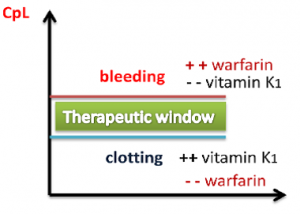Principles of Pharmacology
1.9 Examining Effect
Onset, Peak, and Duration
Dosing considerations play an important role in understanding the effect that a medication may have on a client. During administration, the nurse must pay close attention to the desired effect and therapeutic response, as well as the safe dose range for any medication. The nurse should have an understanding of medication efficacy in order to ensure its appropriateness. If a nurse is provided different medication choices according to a provider’s written protocol, the nurse should select the option with the anticipated desired therapeutic response. Additionally, the nurse must be aware of the overall dose response based on the dosage selected.
Three additional principles related to the effect of a medication on a client are onset, peak, and duration.
Onset: the onset of medication refers to when the medication first begins to take effect
Peak : the peak of medication refers to the maximum concentration of medication in the body, and the point at which the client shows evidence of greatest therapeutic effect
Duration: the duration of medication refers to the length of time the medication produces its desired therapeutic effect
Consider this client care example and apply the principles of onset, peak, and duration: Gurmeet, a 67-year-old female client, who has just undergone hip replacement surgery earlier today, rings the call light to request medication for pain. She notes her pain is “excruciating, a definite 9 out of 10.” Her brow is furrowed, and she is grimacing in obvious discomfort. As the nurse providing care for Gurmeet, you examine her post-operative medication orders and consider the pain medication options available to you. In reviewing the various options, it is important to consider how quickly a medication will work (onset), when the medication will reach maximum effectiveness (peak), and how long the pain relief will last (duration). Understanding these principles is important in effectively relieving the client’s pain and constructing an overall plan of care.
Clinical Reasoning and Decision-Making Activity 1.9
 At 0500, your client, who had a total knee replacement yesterday, rates his pain while walking as 7 out of 10. Physical therapy is scheduled at 0900. The client has acetaminophen (Tylenol) 650 mg ordered every four hours as needed for discomfort. What should you consider in relation to the administration and timing of this client’s pain medication?
At 0500, your client, who had a total knee replacement yesterday, rates his pain while walking as 7 out of 10. Physical therapy is scheduled at 0900. The client has acetaminophen (Tylenol) 650 mg ordered every four hours as needed for discomfort. What should you consider in relation to the administration and timing of this client’s pain medication?- Your client is prescribed NPH insulin to be given at breakfast and supper. As a student nurse, you know that insulin is used to decrease blood sugar levels in clients with diabetes mellitus. During report, you hear that the client has been ill with GI upset during the night, and the nursing assistant just informed you he refused his breakfast tray. While reviewing this medication order, you consider the purpose of the medication and information related to the medication’s onset, peak, and duration. When reviewing the drug reference, you find the NPH insulin has an onset of about 1 – 3 hours after medication administration. What should you consider in relation to the administration and timing of the client’s insulin?
Note: Answers to these activities can be found in the “Answer Key” sections at the end of the book.
Duration and Dosing
Now let’s consider the implication of duration and dosing. Remember the duration of medication is correlated with the elimination. If a medication has a short half-life (and thus is eliminated more quickly from the body), the therapeutic effect is shorter. These medications may require repeated dosing throughout the day in order to achieve steady blood levels of active free drug and a sustained therapeutic effect. Other medications have a longer half-life (and thus a longer therapeutic duration) and are only given once or twice per day. For example, oxycodone immediate release is prescribed every 4 to 6 hours for the therapeutic effect of immediate relief of severe pain, whereas oxycodone ER (extended-release) is prescribed every 12 hours for the therapeutic effect of sustained relief of severe pain.
Monitoring Therapeutic Drug Levels
Now that the basic concepts of medication onset, peak, and duration have been discussed, it is important to understand the value of the therapeutic window and therapeutic index in medication administration.

Therapeutic Window
For every drug, there exists a dose that is minimally effective (the Effective Concentration) and another dose that is toxic (the Toxic Concentration). Between these doses is the therapeutic window, where the safest and most effective treatment will occur (see Figure 1.9).[1] Think of this area as the dosing “sweet spot.”
For example, warfarin (Coumadin) is a medication used to prevent blood clotting and is monitored using a blood test called INR. Too high a dose of warfarin would cause the INR to increase above the therapeutic window and put the client at risk of bleeding. Conversely, too low a dose of warfarin would cause the INR to be below the therapeutic window and put the client at risk of clotting. It is vital that the nurse frequently monitor INR levels for a client receiving warfarin to ensure the dosage appropriately reaches the therapeutic window and does not place the client at risk for bleeding or clotting.
Peak and Trough Levels
Now let’s apply the idea of the therapeutic window to the administration of medications requiring the monitoring of peak and trough levels, which is required in the administration of some IV antibiotics. It is important for the dosage of these medications to be titrated to achieve a desired therapeutic effect for the client. Titration is often accomplished by closely monitoring the blood levels of the medication. A drug is said to be within the “therapeutic window” when the serum blood levels of an active drug remain consistently above the level of effective concentration (so that the medication is achieving its desired therapeutic effect) and consistently below the toxic level (so that no toxic effects are occurring). A peak drug level is drawn at the time when the medication is being administered and is known to be at the highest level in the bloodstream. A trough level is drawn when the drug is at its lowest in the bloodstream right before the next dose is given. Medications have a predicted reference range of normal values for peak and trough levels. These numbers assist the pharmacist and provider in gauging how the body is metabolizing, protein-binding, and excreting the drug, and assist in the adjustment of the prescribed drug doses to keep the medication within the therapeutic window. When administering IV medications that require peak or trough levels, it is vital for the nurse to time the administration of the medication according to the timing of these blood draws.
Therapeutic Index
Therapeutic Index is a quantitative measurement of the relative safety of a drug. It is a comparison of the amount of drug that produces a therapeutic effect versus the amount of drug that produces a toxic effect.
- A large (or high) therapeutic index number means there is a large therapeutic window between the effective concentration and the toxic concentration of a medication, so the drug is relatively safe.
- A small (or low) therapeutic index number means there is a small therapeutic window between the effective concentration and the toxic concentration. A drug with a narrow therapeutic range (i.e., having little difference between toxic and therapeutic doses) often has the dosage titrated according to measurements of the actual blood levels achieved in the person taking it. For example, clients who start taking phenytoin to control seizures have the drug levels in their blood stream measured frequently.
Clinical Reasoning and Decision-Making Activity 1.9a
Mr. Parker has been receiving gentamicin 80 mg IV three times daily to treat his infective endocarditis. He has his gentamicin level checked one hour after the end of his previous gentamicin infusion was completed. The result is 30 mcg/ml. Access the link below to determine the nurse’s course of action.
View information on Therapeutic Drug Levels
(Within the activity link, be sure to select “click to keep reading” in order to view drugs that are commonly checked, their target levels, and what abnormal results mean).
Based on the results in the above client scenario, what action will the nurse take based on the result of the gentamicin level of 30 mcg/mL?
Note: Answers to these activities can be found in the “Answer Key” sections at the end of the book.
Monitoring the Effects
As medications are administered, the nurse should perform careful client assessments, trend the assessment results, and monitor for side effects or toxic adverse effects. Drug dosages should be evaluated for potency in action. Potency refers to the amount of the drug required to produce the desired effect. A drug that is highly potent may require only a minimal dose to produce a desired therapeutic effect, whereas a drug that has low potency may need to be given at much higher concentrations to produce the same effect. Consider the example of opioid versus non-opioid medications for pain control. Opioid medications often have a much higher potency in smaller doses to produce pain relief; therefore, the overall dose required to produce a therapeutic effect may be much less than for other analgesics.
The nurse preparing to administer medications must also be cognizant of drug selectivity and monitor for potential side effects and adverse effects. The selectivity of a drug refers to how readily the drug targets specific cells to produce an intended therapeutic effect. Drugs that are selective will search out target sites to create a drug action, whereas non-selective drugs may impact many different types of cells and tissues, thus potentially causing side effects. A side effect occurs when the drug produces effects other than the intended effect. A side effect, although often undesirable, is generally anticipated by the provider and is a known unintended consequence of the medication therapy. Conversely, there are occasional occurrences of unanticipated effects that are dangerous to the client. These dangerous occurrences are known as adverse effects. Adverse effects are relatively unpredictable, severe, and are reason to discontinue the medication.
Attributions
- “Monitoring Therapeutic Drug Levels” and “Monitoring the Effects” was adapted from Principles of Pharmacology by Carl Rosow, David Standaert, & Gary Strichartz (republished by LibreTexts), which is licensed under CC BY-NC-SA 4.0 licence.
- "Therapeutic Window" by Shefaa Alasfoor is licensed under CC BY-SA 3.0 ↵
The maximum effect of which the drug is capable.
As the dose of a drug increases, the response should increase. The slope of the curve is characteristic of the particular drug-receptor interaction.
When a medication first begins to work and exerts a therapeutic effect.
When the maximum concentration of drug is in the body.
The length of time that a medication is available within the body and producing its desired therapeutic effect.
The dosing window in which the safest and most effective treatment will occur.
The trough level of medication indicates the lowest concentration of that medication in a person's body. Troughs of medication concentration occur after the drug has been broken down and metabolized by the body.
A measurement of the amount of drug that produces a therapeutic effect compared to the amount of drug that produces a toxic effect.
The drug dose required to produce a specific intensity of effect.
How readily the drug targets specific cells to produce an intended therapeutic effect.
The effect of a drug, other than the desired effect, sometimes in an organ other than the target organ.
An unintended pharmacological effect that occurs when a medication is administered correctly.

